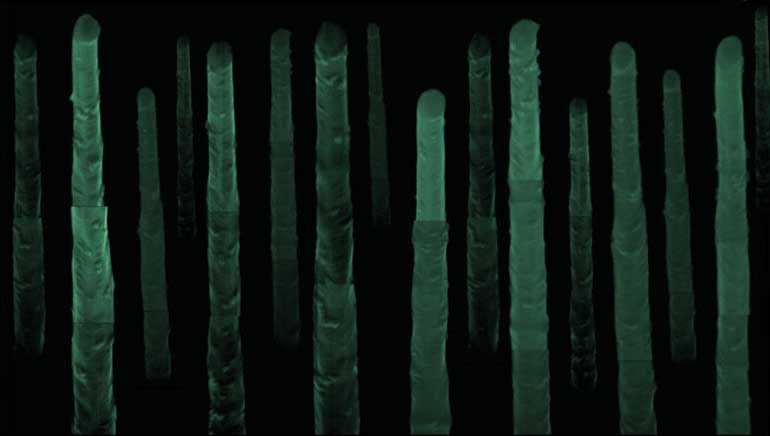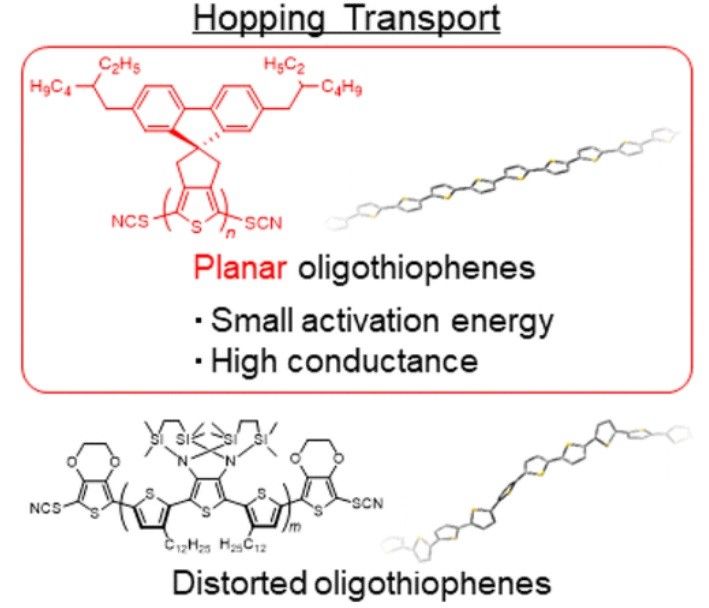Nanotechnology specialists from Japan have discovered a process to manufacture single-molecule nanowires, complete with an insulation layer, up to 10 nanometres in length. But significantly, they found that untwisting the ribbon-like chains to create a flat nanowire drastically improved electrical conductivity.
The discovery is being seen as a major breakthrough towards next generation electronics and may influence the nanowire industry into a totally new direction.
Nanowires offer enormous potential in an increasingly inter-connected world. They are essentially wires that are so small that in human perception they have only one dimension but being only one atom wide and one atom high.
While copper is one of the most widely used raw materials for the manufacture of nanowires, they can be made from a variety of materials.
They are ‘grown’ or synthesized on many different substrates through a vapor deposition process. This requires that a tiny bead of liquid metal (often gold) is deposited on a surface; the nanowire material, in vapor, is then absorbed by the molten gold. The metal vapor then begins to grow from the bottom of the gold bead as a skinny column of material. The dimensions of the wire can be altered by altering the size of the metal bead.

This process may sound easy, but the process requires accuracy. The results, as the MIT website explains, can lead to greatly improved conductivity, “The structure of a nanowire is so simple that there’s no room for defects, and electrons pass through unimpeded. This sidesteps a major problem with typical crystalline semiconductors, such as those made from a wafer of silicon: There are always defects in those structures, and those defects interfere with the passage of electrons.”
Now this latest research, from Osaka University, takes nanowires into a totally new direction as the raw material used is based on a carbon-based conductor. These are much easier and cheaper to make, and so they have been customized into conventional electronics, such as OLED TVs, solar panels, and iPhone screens.
The Osaka team achieved this by synthesizing chains of a carbon-based conductor called oligothiophene, producing various lengths, with up to 24 ‘repeat units’.
As the nanotechnology journal Nanowerk, explains, “This means that single nanowires could be up to 10 nanometres in length. Insulation of the wires was needed to avoid interwire currents, so that the intrinsic conductivity of a single molecule could be measured accurately.”
The report goes further into defining the breakthrough, as the technology relies on the laws of minute physics. Stating that, “On the basis of the rules of quantum mechanics, electrons in molecules behave more like spread-out waves than localized particles. The overlapping bonds in oligothiophene allow electrons to be entirely spread out over the polymer backbone, so they can easily transverse the molecule to create an electrical current.”
As the study’s first author, Dr Yutaka Ie, explains, there are two ways that this current can flow. “Over short distances, electrons rely on their wave-like nature to 'tunnel' directly through barriers, but over long distances, they hop from site to site to reach their destination.”
The team also found that by altering the oligothiophene chain from twisted to flat led to a bigger overlap of the backbone of the oligothiophene, which led to improved conductivity. Ultimately, by using flatter chains, a switch from tunnelling conduction to hopping conduction took place.
The team have now published their findings in The Journal of Physical Chemistry Letters, where they state that they have, “… developed highly planar and completely insulated oligothiophenes between 0.85 and 9.64 nm in length.” Explaining how, “Compared to distorted oligothiophenes, single-molecule conductance measurements of the planar molecules show (i) a smaller activation energy and larger electrical conductance in the hopping transport regime and (ii) a shift in crossover between tunnelling and hopping conduction toward a short molecular length.”

While the concept is difficult for laymen to understand, what is clear to the scientific and business communities is that the findings may lead to a new generation of inexpensive high-tech devices, such as tablet screens and photovoltaics. The breakthrough is also timely, as the world looks to ever smaller connection methods in preparation for the Internet of Things.
Additionally, the researchers believe that this work can lead to a whole new approach to how nanowires function and how they should be manufactured. As the study’s lead author Dr Yoshio Aso observes, “This demonstrates that insulated nanowires have the potential to be used in novel ‘single-molecule’ electronics.”
Photo credit: MIT, ACS, Novarials, Iopscience, & Firstnano
